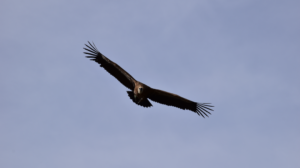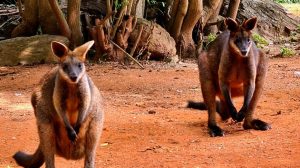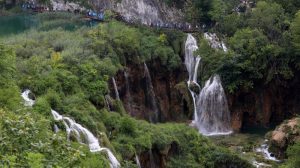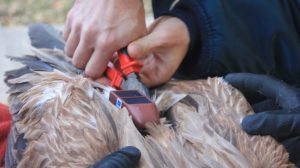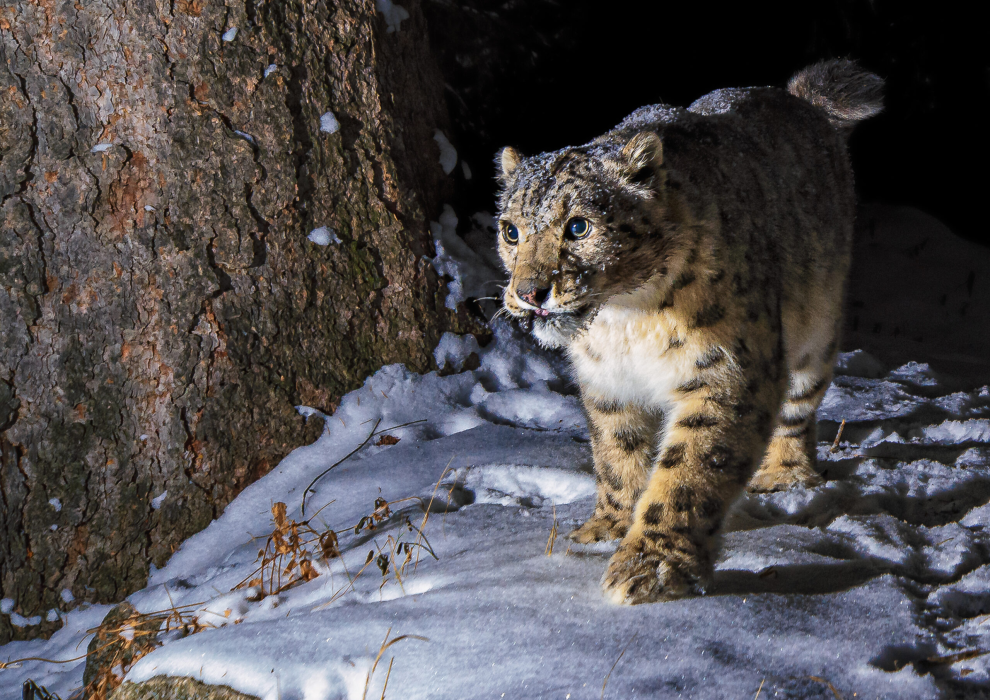Central Asia is home to some of the last migratory mammal species in the world. Over the course of a three-year initiative, IUCN Save Our Species invested almost 500,000 USD through seven projects in Kazakhstan, Kyrgyzstan, and Tajikistan to protect threatened species affected by a fast-changing landscape.
Central Asia holds some of the world’s largest intact grasslands, semi-deserts, and high mountain ranges. Due to sparse vegetation and water scarcity, many of its resident animal species have adapted to a migratory lifestyle: crossing large distances to find fertile feeding and breeding grounds. However, railways, fences, pipelines, and other infrastructure bisect migration routes and prevent animals from moving across landscapes. Simultaneously, poaching, overhunting, and illegal wildlife trade continue to threaten migrating species populations, driven by demand for meat, horns, and other animal parts. In addition, increasing livestock density causes competition with wildlife over scarce food resources, while land conversion for agricultural purposes has reduced the quality and availability of suitable habitats. Climate change is now exacerbating all these threats.
To start addressing some of these issues, the SOS Central Asia initiative supported projects that have reduced human-wildlife conflict, increased critical species monitoring, and resulted in the establishment of new conserved areas.
In Kazakhstan, the Association for the Conservation of Biodiversity studied migrations of Goitered Gazelles in the Barsa-kelmes and Ustyurt reserves, aiming to increase habitat connectivity and allow these animals to move across landscapes. They assessed migration barriers of border wire fences and formulated recommendations to authorities on ways to support transboundary migrations in accordance with commitments under the Convention on Migratory Species.
The studies delivered by Marwell Wildlife contributed greatly to the overall knowledge of the status and distribution of gazelle populations in the wild. The experts studied threats to Goitered Gazelles outside protected areas in the catchment region of the Ili River, as well as within the Altyn Emel and Charyn Canyon national parks. Their discovery of approximately 1,000 previously unaccounted gazelles living outside of protected areas highlighted the need for multi-use landscape management. The resulting landscape resistance maps reveal obstacles to the movement of animals and areas for priority habitat restoration vital to maintaining connectivity.
In Kyrgyzstan, the Snow Leopard Trust implemented a community-based conservation approach in the Ala-too Mountains to increase the amount of Snow Leopard habitat under protection and reduce threats to the species. Securing partnerships between the government and local communities and by introducing community incentive programmes, the project helped increase community engagement in conservation. Finally, new community co-managed conserved areas were established in Aksu Sanctuary (around 76 km²) and in Kochkor (approximately 2,317 km²).
In addition to conservation action implemented via the grants, SOS Central Asia offered direct support to civil society organisations including project management, financial management, capacity building, and networking. This was achieved through the engagement of other grantee organisations, experts from the IUCN Species Survival Commission, and regional and international partners to raise awareness of the urgent need for increased conservation of biodiversity in Central Asia.
Source: iucn














